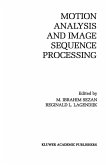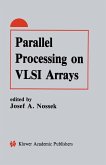A color time-varying image can be described as a three-dimensional vector (representing the colors in an appropriate color space) defined on a three-dimensional spatiotemporal space. In conventional analog television a one-dimensional signal suitable for transmission over a communication channel is obtained by sampling the scene in the vertical and tem poral directions and by frequency-multiplexing the luminance and chrominance informa tion. In digital processing and transmission systems, sampling is applied in the horizontal direction, too, on a signal which has been already scanned in the vertical and temporal directions or directly in three dimensions when using some solid-state sensor. As a conse quence, in recent years it has been considered quite natural to assess the potential advan tages arising from an entire multidimensional approach to the processing of video signals. As a simple but significant example, a composite color video signal, such as the conven tional PAL or NTSC signal, possesses a three-dimensional spectrum which, by using suitable three-dimensional filters, permits horizontal sampling at a rate which is less than that re quired for correctly sampling the equivalent one-dimensional signal. More recently it has been widely recognized that the improvement of the picture quality in current and advanced television systems requires well-chosen signal processing algorithms which are multidimen sional in nature within the demanding constraints of a real-time implementation.
Bitte wählen Sie Ihr Anliegen aus.
Rechnungen
Retourenschein anfordern
Bestellstatus
Storno








